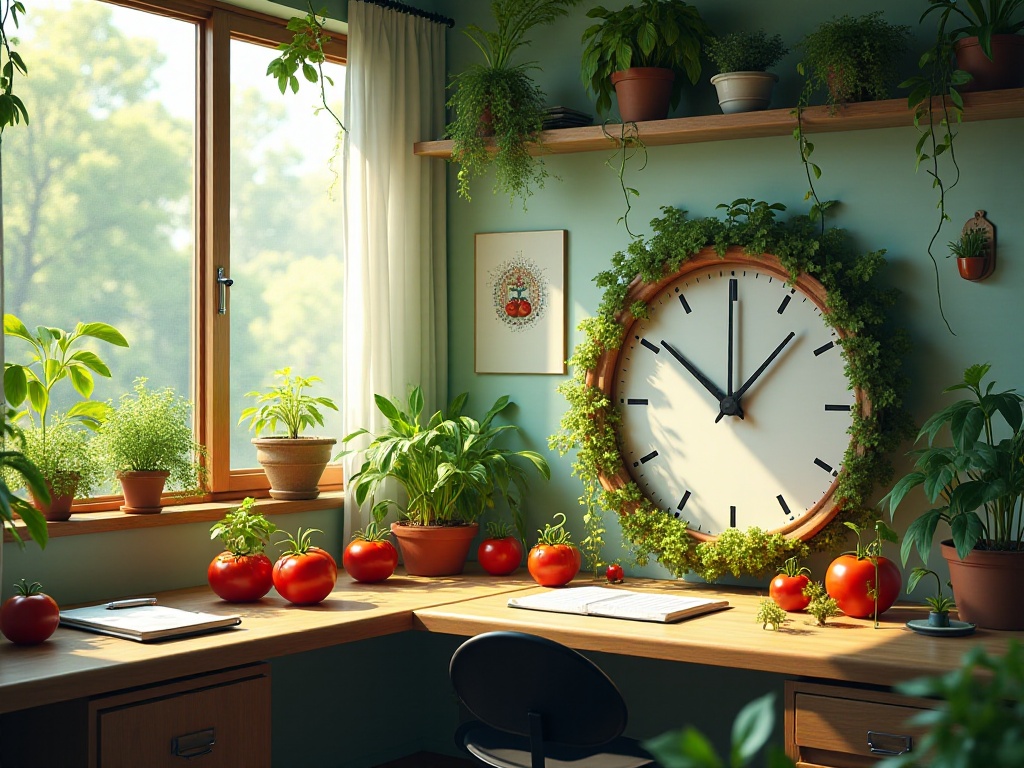In life, we often face a major challenge: our closets are always stuffed full. Clothes, shoes, and accessories pile up until we can't even close the door. This isn't just a space issue - it affects our mood and efficiency. Imagine starting each morning facing a chaotic closet, spending precious time searching for clothes. It's bound to affect your mood. Today, I'll share some closet organization tips to help transform your closet into a well-ordered space.
Slim Hangers
Let's start with hangers. Have you noticed that the bulky, wide hangers take up the most space in your closet? Switching to slim hangers, like velvet ones, not only saves space but also allows clothes to hang more compactly. After trying this myself, I found my closet suddenly had much more space. The choice isn't just about being slim - you need to consider weight capacity and durability. After all, you don't want hangers breaking under the weight of your clothes, causing unnecessary trouble.
I recommend slim plastic or metal hangers - they're both lightweight and sturdy, perfect for long-term use. While plastic hangers are light, lower quality ones may warp, so pay attention to the material. Metal hangers are heavier but can hold more weight and are usually designed more precisely, allowing for smaller gaps between hangers to save more space.
If you prefer wooden hangers, slim versions are available. They're not only attractive but add a natural touch to your closet. However, wooden hangers are usually more expensive and require moisture protection to prevent mold. Choose based on your needs and preferences, but ensure whatever material you select can properly support your clothes.
Classification Method
Next, let's discuss classification methods. You've probably heard about organizing by type, color, and frequency of use - this is the golden rule of closet organization.
Organizing by Type
First, organize by type, grouping all tops, pants, skirts, and jackets together. This isn't just for aesthetics - it makes finding clothes easier. When you're rushing in the morning, you can quickly locate what you need. Group shirts and T-shirts together, jeans and sweatpants together, skirts and dresses together, so you don't have to search the entire closet each time.
Plus, organizing by type helps you clearly see how many pieces you have of each category, preventing duplicate purchases. Some people might discover they have five nearly identical pairs of jeans when two or three would suffice. Through classification, you can manage your closet more effectively and reduce unnecessary spending.

Organizing by Color
Next, organize by color. Grouping same-colored clothes together not only looks pleasing but makes it easier to find matching pieces. I arrange mine in rainbow order - red, orange, yellow, green, blue, indigo, violet - making searching through my closet as enjoyable as looking at a rainbow.
Color organization not only makes your closet more orderly but helps with outfit coordination. You can easily see which colors you're lacking and shop more purposefully. When you need to quickly put together a colorful outfit, a color-organized closet lets you see all matching pieces at a glance, saving time and effort.
Organizing by Frequency of Use
Finally, organize by frequency of use. Frequently worn items should be most accessible, while special occasion clothes can go deeper in the closet. I usually keep year-round pieces at the front for easy access regardless of season.
Organizing by frequency of use makes daily closet use more efficient. Daily wear goes in front, saving time on outfit selection, while occasional pieces like formal wear, wedding suits, or special occasion clothing can go in less accessible spots. This not only creates order but protects less-used items from frequent handling and wear.
Space Utilization
Of course, classification alone isn't enough - we need to maximize every inch of closet space.
Multi-level Shelving
For instance, installing extra shelves or hanging rods can double your closet space. I added an adjustable rod to my closet, allowing me to adjust heights based on clothing length, avoiding wasted space while improving organization. When installing multiple levels, consider putting shorter items on top and longer ones below to maximize vertical space.
You can also use the closet's top space by installing extra shelves for less-used items like suitcases, seasonal clothes, or occasional bedding. This space utilization isn't limited to the interior - the closet door space can be used too. Install hooks or hanging organizers for small items like scarves, hats, and belts.
Storage Boxes
For seasonal clothes you don't wear often, I suggest using storage boxes or vacuum compression bags. This saves space and protects clothes from dust. I usually store winter coats and summer shorts/skirts separately on the top or bottom shelf.
Storage boxes are stackable, saving more space. Choose transparent boxes to easily see contents. Vacuum bags can compress bulky items like down jackets or heavy winter clothes to a fraction of their size. Just put clothes in the bag, use a vacuum to remove air, and the clothes compress into a small package, greatly saving space.
Quick Cleaning Method
Besides organization, cleaning is an important life skill. Let's look at how to make cleaning more efficient and easier.
Top-Down, Left-Right Method
When cleaning, working from top to bottom and left to right ensures you don't miss any spots. Start from the ceiling and work down to the floor, so dust and dirt don't fall on already cleaned areas.
When cleaning your closet, start with the top, where dust often accumulates. Then clean between hangers and clothes, areas often overlooked. Finally, clean the floor. Using this method ensures thorough cleaning of every corner, leaving no spots untouched.
Multi-purpose Cleaner
To minimize tools, I recommend choosing a multi-purpose cleaner. These cleaners work on various surfaces like kitchen, bathroom, and living room areas, eliminating the need for multiple products, saving money and space. I use a spray-type cleaner, which is very convenient.
When choosing a multi-purpose cleaner, ensure it's suitable for various closet materials like wood, plastic, or metal. Some cleaners might corrode certain materials, so test in an inconspicuous spot first. Apply cleaner to a cleaning cloth rather than directly on the closet to avoid getting cleaner on clothes.

Improving Personal Efficiency
Life isn't just about organizing and cleaning - we need to improve personal efficiency to make each day fulfilling.
Pomodoro Technique
Speaking of efficiency improvement, the Pomodoro Technique is essential: set 25-minute work periods followed by 5-minute breaks. After multiple trials, I've found this method really helps focus attention and improve work efficiency.
When using the Pomodoro Technique for closet organization, treat it as one task with set time periods. Focus solely on organizing for 25 minutes without distractions, then take a 5-minute break before continuing. This work rhythm improves efficiency while preventing fatigue from prolonged single activities.
Digital Tool Tracking
In modern life, digital tools are great efficiency boosters. For example, I use Google Calendar for scheduling and Trello for task tracking. These tools not only remind you of deadlines but help break down tasks into steps.
For closet organization, use a task management app like Todoist or Microsoft To Do to break down the project into smaller tasks like cleaning the closet, sorting clothes, buying hangers, etc. Check off each completed task for a sense of achievement while clearly seeing project progress. Digital tool reminders ensure you don't miss any steps, keeping closet organization on track.

Cooking Tips
In life, cooking is also essential. Here are some tips to make cooking more convenient.

Preserving Herbs in Ice Cube Trays
If you love using fresh herbs to enhance food flavor like I do, you'll love the ice cube tray preservation method. Chop herbs, place them in ice cube trays, and cover with olive oil. When you need herbs, just pop out a cube to add to your cooking.
This method preserves herb freshness and allows for easy cooking use. The frozen herb-oil cubes can go directly into stir-fries, baking, or salads, eliminating the need to prepare fresh herbs each time. Plus, the oil prevents herbs from blackening during storage, maintaining their color and flavor.
Reviving Stale Bread
What to do with stale bread? Don't throw it away - use this trick to restore freshness: sprinkle water on the bread and bake at 300°F (about 150°C) for 10 minutes. You'll find the bread becomes soft again, tasting fresh-baked.
This method is eco-friendly and maximizes ingredient use. Bread becomes stale mainly due to moisture loss; adding moisture and heat allows the bread to reabsorb water, restoring softness. If you don't have an oven, use a microwave but watch time and temperature to avoid hardening or burning. You can also try steaming bread slices for a few minutes for similar results.
That's all for today's tips. I hope these life hacks help you keep your closet neater, life more organized, and efficiency higher. Feel free to share your own life tips - let's learn from each other and make life more beautiful.


